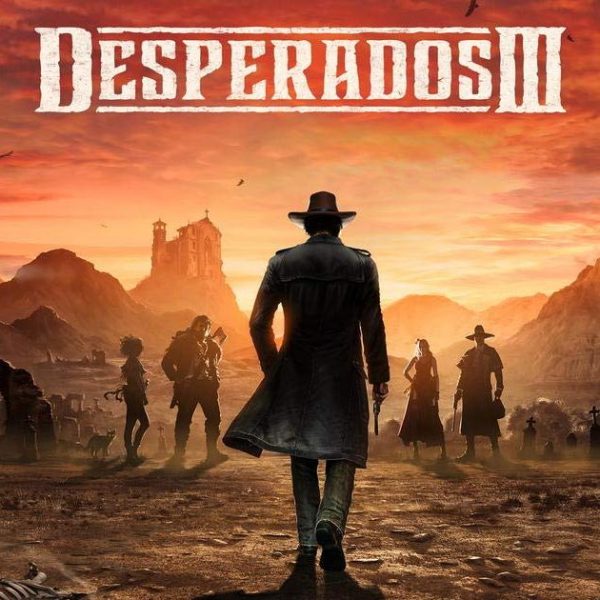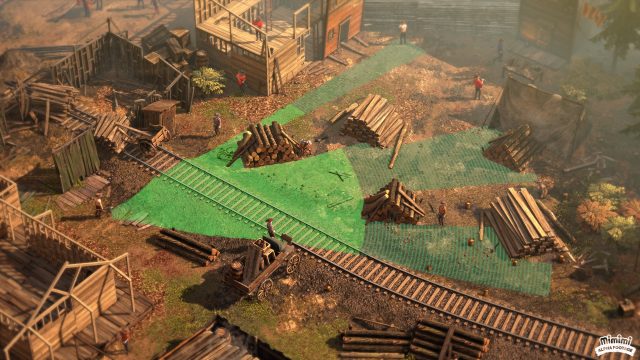
A cowboy stealth action game? You had me at ‘cowboy stealth action’.
Desperados 3 is the follow up to, err, Desperados 2 but it’s a prequel, so you don’t need to know anything at all about what happened – helpful since number 2 was released in 2006.
If anything, it’s a sequel to 2016’s Shadow Tactics: Blades of the Shogun. Not in the plot, but the developers said they felt like they pretty much nailed the ‘stealth strategy genre’ with that game, but Desperados 3 was their opportunity to perfect it. The good news – they pretty much have.
Desperados 3 plays from an isometric point of view, where you control a number of characters in real-time. The story begins with you as John Cooper on a train to meet your friend, and it’s hijacked by bandits. With somewhat of an overreaction, John decides to kill everyone to get the train going again (disclaimer: can you play without killing but it’s a lot harder). Upon meeting his friend, John and Hector are embroiled in a saga with a Wild West gang, as a rag-tag bunch of character assemble as your crew.
Each level plays out like a miniature play-set. Beginning with a continuation of the story, you have a number of objectives to meet, and a combination of the various characters with which to achieve them. Let me give an example.
An early level has you trying to get some dynamite to blow up a bridge to spite this gang. With Kate, the Doctor and John, you need to get the dynamite from one of two locations, back to the bridge to blow it up, and then meet Hector on the train. The Doc can distract people with his medical bag which blows up to distract them with a gas when they get near. He can kill people slowly with a syringe but has to drag bodies to hide them slowly. He is also a long-range sniper.
John has a pistol, quick knife attacks, can swim as well as climb and can move bodies quickly. However, he has to collect his knife after throwing it. Kate can’t kill anyone, only temporarily knock them out (after which they’re alerted). She can, however, find disguises so the guards cannot detect her. She can throw a vial of perfume to blind people, but also distract guards when she’s in disguise mode, and lure them away in a direction temporarily.

You need to combine all these elements. On this same level, there’s a wooden stockpile yard for construction. Each guard has a moving cone of vision with levels which can detect you depending on if you’re standing or crouching. Typically, they’ll cross over each other, so you find yourself working back to the weak line. To solve the wooden storage yard problem, I ran in as John avoiding the cones of vision. Climbing up, I ran around the top, jumped down and got Kate in disguise to distract the one who was looking at him. With him dead, he’s hidden in a bush. I work my way around the yard in the same way until I get to the last two who are patrolling as a pair. Using Showdown mode, I take them out with the Doctor and John.
Showdown mode. Showdown mode pauses the game (on all but the highest difficulties) and allows you to queue up actions to do them simultaneously. In my example above, I paused and planned the Doc to shoot, and John to knife throw at the same time, taking out both enemies. You can also manually activate in real-time, so in another instance, I queued up Kate to throw a blinding vial, and the Doc to snipe while at the same time I ran in as John to finish off a final enemy that was figuring out what happened. It works brilliantly and elevates the game to something else.
That something else turns Desperados into a puzzle game. Or at least helps you realise that’s basically what it is. Whilst it is stealth-action, you won’t get into any firefights. Gunshots are done with holding L1, moving the reticle and releasing to fire, which is possible to be done quickly but it’s real-time stealth, planning strategy game more than anything else. The first chapter really takes you through this as a tutorial, but the levels are long – brilliantly showcasing the dexterity and variety in the game – the final level in the first chapter took me over an hour. This is not a complaint – the levels are huge with many ways to complete them.
Replayability is a key attribute here too. Just completing the level is step one. There are a number of challenges and sub-challenges to do which become visible once you’ve done the level. Get the dynamite from one location? Now do the other. Maybe don’t fire a gun. Maybe don’t kill anyone. Maybe shoot the support on a cliff face to kill three enemies at one time. There’s a lot to do.
I mentioned before the miniature playset. I always felt with Shadow Tactics that the levels were like mini-dioramas. Brilliantly, the devs clearly identify with this, and have a great advert out that shows models built based on some levels, and then coming to life as they merge with the game.
There are masses of elements which I’ve not discussed. Different enemy types – long coats can only be stunned by any character except Hector for example – and mechanisms you can use play a part in a vast number of levels. If there’s a hitch, it’s a technical one, and it’s minor but noticeable. You can choose between performance or resolution, but sadly even with ‘performance’ selected, there are some hiccups with frame rates. On sprawling levels, it doesn’t ever worsen, but will occasionally just niggle at you a little bit. It hasn’t spoiled by fun at all, but it looks and sounds fantastic with such a brilliant presentation, this makes me wish for perfection.
Who is it for? It’s easier to ask who is it not for. It’s not for someone who must have hard-and-fast action. Immediate gratification this is not, but with a frequent save system in place (and prompts to save if you haven’t), each level does turn into lots of mini-battles so long sessions aren’t necessary which is helpful too. It’s one of the best games I’ve played in recent times, easily as good as Shadow Tactics with a number of new mechanics which makes it well worth a look. Also, the soundtrack is very, very good – and available on Spotify.
Reviewed on PS4


Leave a Reply